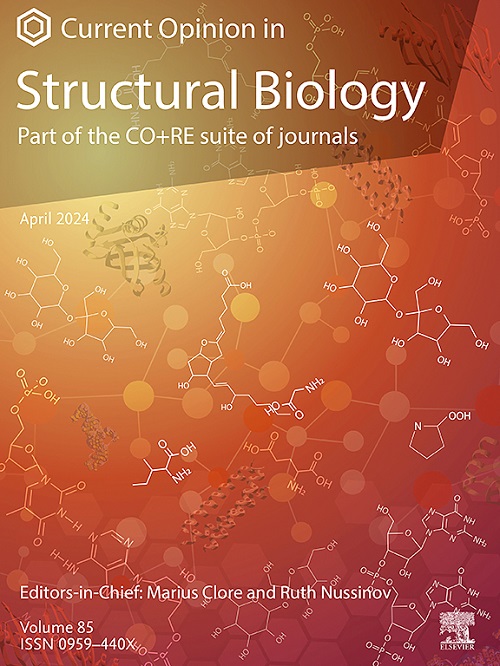Language models for protein design
IF 6.1
2区 生物学
Q1 BIOCHEMISTRY & MOLECULAR BIOLOGY
引用次数: 0
Abstract
The recent surge of large language models has shown that machines are capable of reading, understanding, and communicating through language, even sometimes displaying capabilities surpassing those of humans. Proteins can be represented as strings of amino acids akin to words in a sentence, and the same principles of language modeling can be used to learn informative representations for protein structure prediction, design, and property prediction. In this review, we will focus on applications of language modeling to protein design. We will first cover the foundations of protein language modeling and discuss recent advances such as context-conditioned design and structure integration. We also consider current shortcomings and promising avenues of research for protein language modeling to facilitate future development of improved protein language models for design.
蛋白质设计的语言模型
最近大量涌现的大型语言模型表明,机器能够通过语言进行阅读、理解和交流,有时甚至表现出超越人类的能力。蛋白质可以表示为类似于句子中的单词的氨基酸串,并且可以使用相同的语言建模原理来学习蛋白质结构预测、设计和属性预测的信息表示。本文将重点介绍语言建模在蛋白质设计中的应用。我们将首先介绍蛋白质语言建模的基础,并讨论最近的进展,如上下文条件设计和结构集成。我们还考虑了目前蛋白质语言建模的不足和有前途的研究途径,以促进未来设计中改进的蛋白质语言模型的发展。
本文章由计算机程序翻译,如有差异,请以英文原文为准。
求助全文
约1分钟内获得全文
求助全文
来源期刊

Current opinion in structural biology
生物-生化与分子生物学
CiteScore
12.20
自引率
2.90%
发文量
179
审稿时长
6-12 weeks
期刊介绍:
Current Opinion in Structural Biology (COSB) aims to stimulate scientifically grounded, interdisciplinary, multi-scale debate and exchange of ideas. It contains polished, concise and timely reviews and opinions, with particular emphasis on those articles published in the past two years. In addition to describing recent trends, the authors are encouraged to give their subjective opinion of the topics discussed.
In COSB, we help the reader by providing in a systematic manner:
1. The views of experts on current advances in their field in a clear and readable form.
2. Evaluations of the most interesting papers, annotated by experts, from the great wealth of original publications.
[...]
The subject of Structural Biology is divided into twelve themed sections, each of which is reviewed once a year. Each issue contains two sections, and the amount of space devoted to each section is related to its importance.
-Folding and Binding-
Nucleic acids and their protein complexes-
Macromolecular Machines-
Theory and Simulation-
Sequences and Topology-
New constructs and expression of proteins-
Membranes-
Engineering and Design-
Carbohydrate-protein interactions and glycosylation-
Biophysical and molecular biological methods-
Multi-protein assemblies in signalling-
Catalysis and Regulation
 求助内容:
求助内容: 应助结果提醒方式:
应助结果提醒方式:


